Best indoor plants: 10 best houseplants for every room
The best indoor plants will add instant greenery to your home as well as introducing some valuable health and mood-boosting benefits

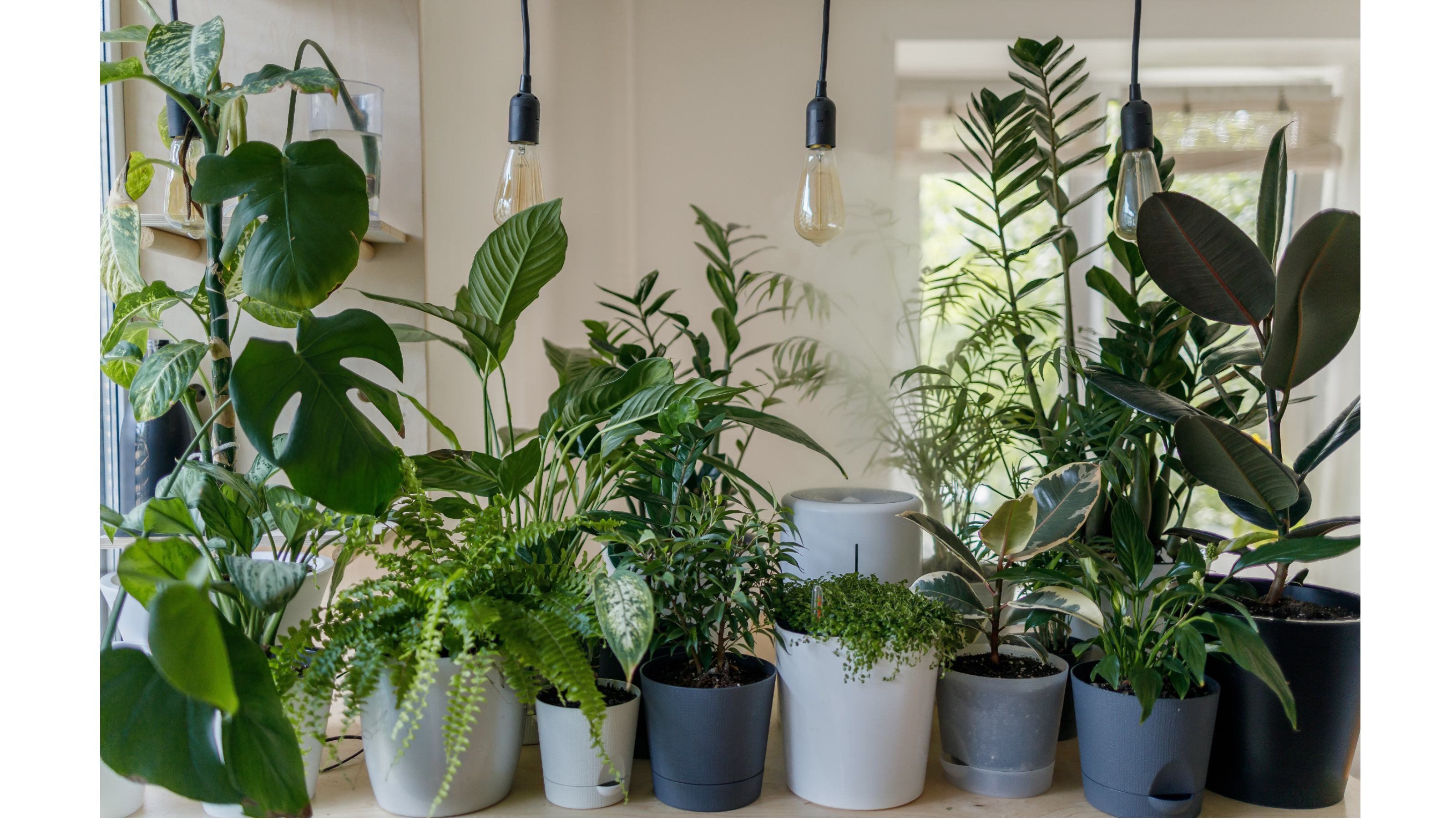
Our edit of the best indoor plants will help you to extend the greenery from your garden into the home, bringing all the health and mood-boosting benefits of nature into your interior.
The wellbeing enhancing benefits of plants are well-documented, from studies which show hospital patients heal faster when they have a view of greenery whilst they recover, to research showing a significant increase in care home resident’s happiness levels when given a house plant to care for.
As if making us healthier and happier wasn’t enough, the best indoor plants also create a feel-good visual focal point in a room. They can bring vibrant ‘aliveness’ into our man-made spaces, providing plenty of green - the colour known for its restful, relaxing psychological properties - and of course, for those of us who have small courtyard or balcony gardens, indoor plants offer the perfect way to maximise our plant-growing space.
Inspired to create your own oxygen-boosting indoor garden ideas? Read on to discover the best indoor plants for your home.
The best indoor plants for a greener interior
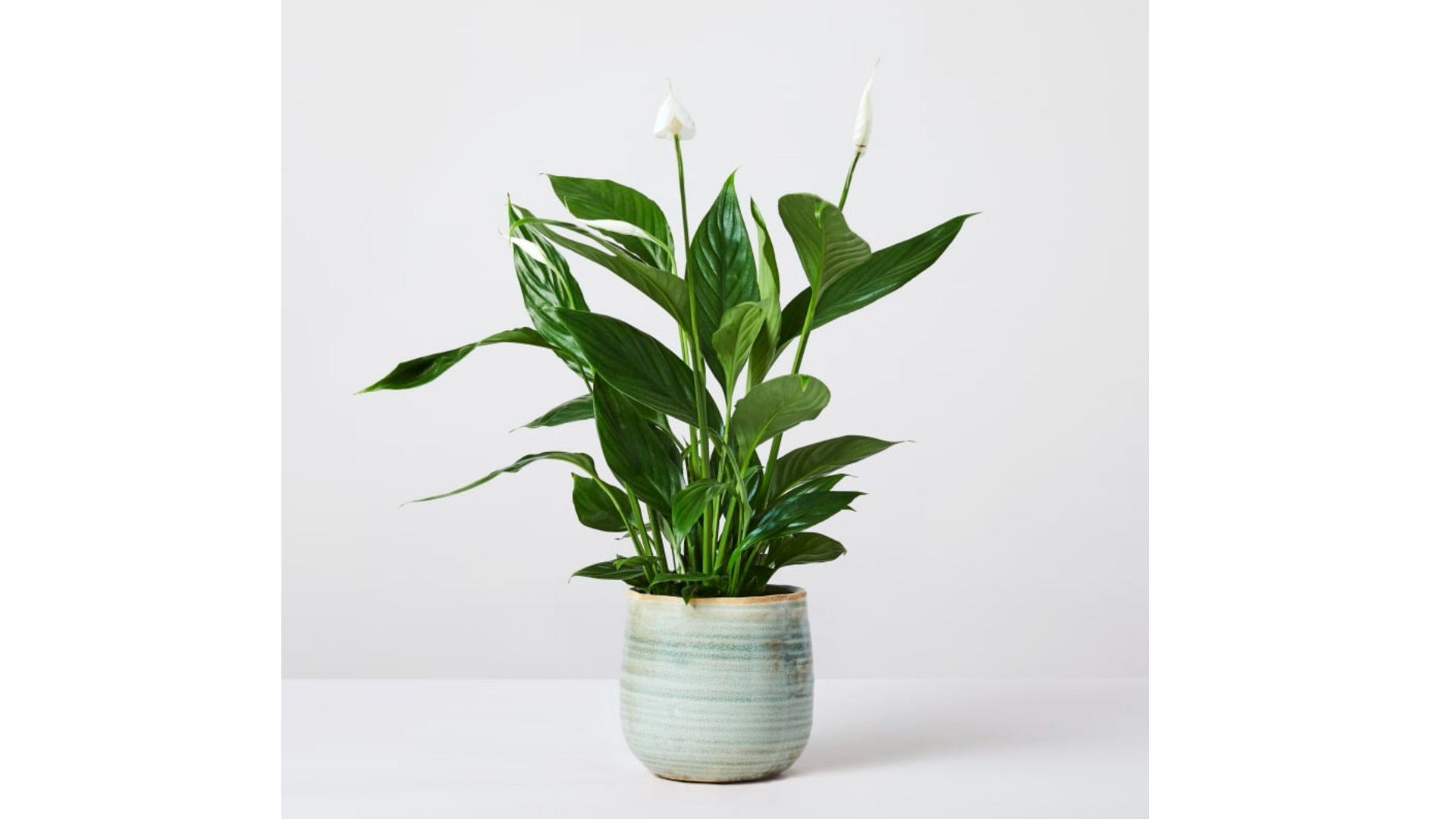
1. Peace lily / Spathiphyllum
Best indoor plants: the easiest plant to care for
Care level: Easy | Price: Affordable | Pet safe: No, mildly toxic if eaten
The peace lily or Spathiphyllum is recognisable for its dark green glossy leaves and contrasting white teardrop-shaped flowers. The peace lily is tolerant of shade, easy to look after, and best of all it's one of the best indoor plants for air purification earning the top all-round results in NASA’s Clean Air Study, removing high quantities of formaldehyde, benzene, trichloroethylene, xylene, toluene and ammonia from the home.
How do you care for a peace lily?
The peace lily is top of our list because it’s one of the best low maintenance indoor plants. Unlike other plants where you might need to guess when you should water, the peace lily is incredibly helpful at communicating its needs by drooping dramatically when it requires water. But don’t worry, a quick hydrate and it will soon perk back up again.
Where should I place a peace lily in my house?
Most plants release oxygen during the day, but the peace lily is one of a small number of indoor plants which continue to release oxygen at night - making it a great indoor plant for the bedroom. However, as a fantastic all-rounder, the peace lily will be happy almost anywhere in the house. It’s especially useful for rooms that don’t get huge amounts of light, like bathrooms or hallways, and as it’s happy in shadier spots it will still be content in trickier north or east-facing rooms.
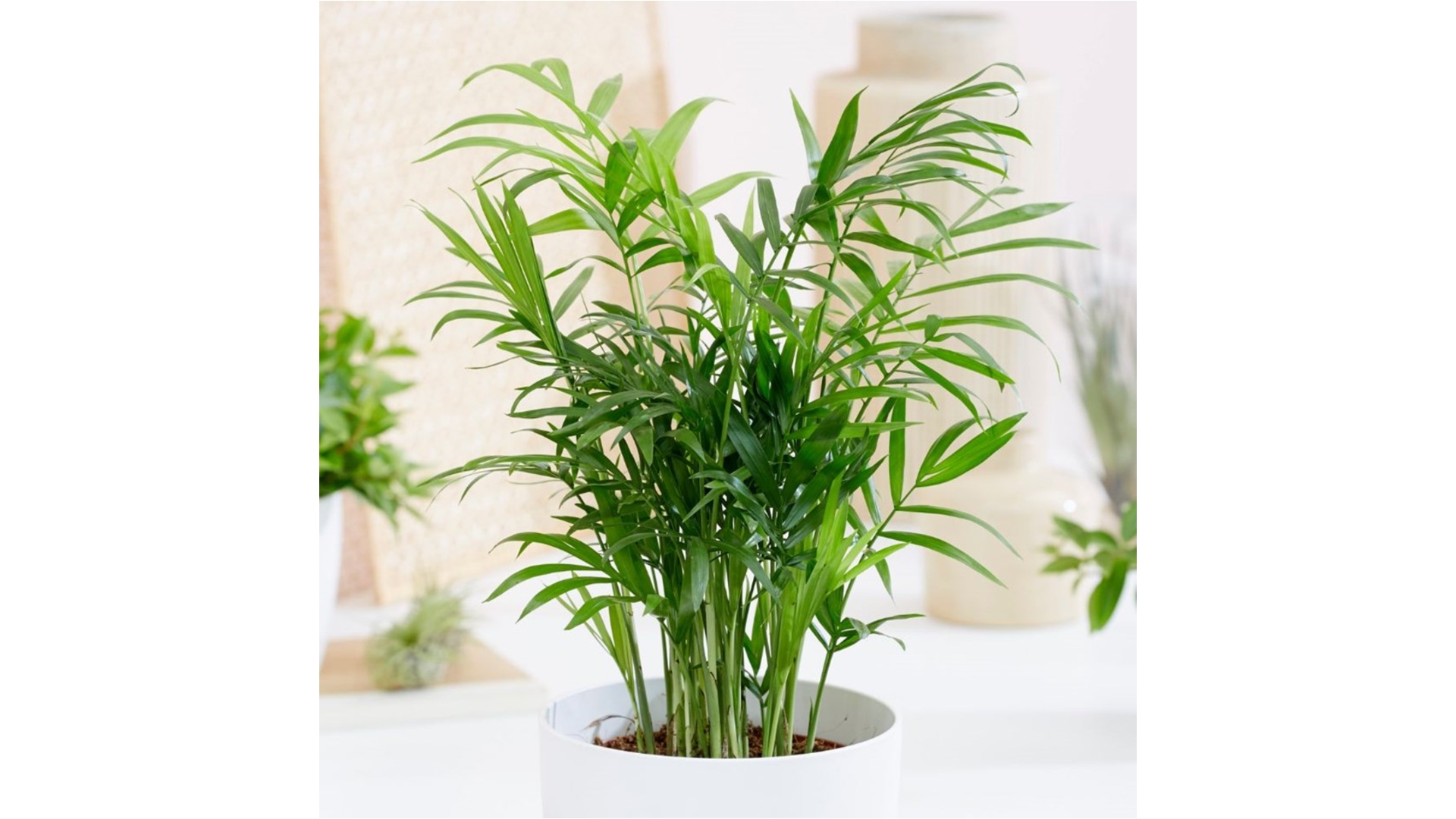
2. Parlour Palm | Chamaedorea elegans
Best indoor plants: the best tropical plant for an indoor jungle
Care level: Easy | Price: Small plants are affordable, larger plants get expensive | Pet safe : Yes
As well being one of the best indoor plants for adding a touch of the tropical to your interior, the parlour palm or Chamaedorea elegans has great aesthetic value with elegant arching leaf stems and an impressive freestanding habit which will add height to an interior; group several different sizes together to create a verdant display.
The parlour palm prefers bright indirect light but as long as it has a spot out of the shade it makes an easy-to-care-for indoor plant. And for pet owners - seeing as its swaying fronds can be particularly appealing to cats - the good news is it’s non-toxic.
How do you look after for a parlour palm?
Hailing from tropical climates, the parlour palm prefers it warm and humid, so it will thank you for a light misting on top of your regular watering, and for keeping it away from cold draughts, or too close to radiators where it will dry out. Find it a comfortable spot and it will grow happily for many years though.
How long does a parlour palm take to grow?
The parlour palm can reach heights of up to 150cm in maturity, but it’s slow-growing, so it won’t outgrow your home too quickly. This does mean larger plants can be expensive - after all they’ve taken years of care to grow that tall - but smaller specimens are usually very affordable if you have patience.
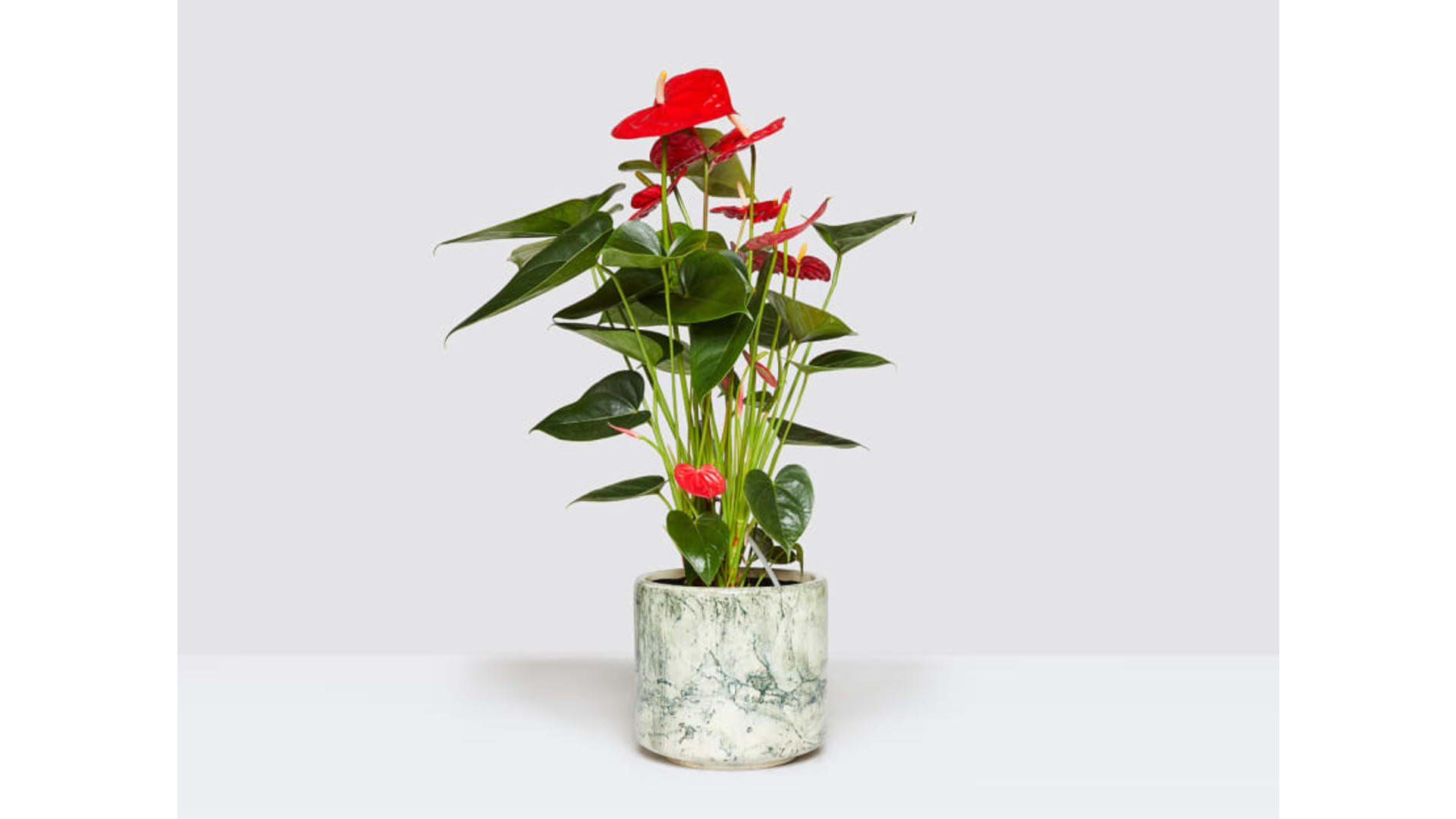
3. Flamingo Lily | Anthurium
Best indoor plants: the best flowering plant
Care level: Easy | Price: Expensive | Pet safe: No, sap is toxic to skin and harmful if ingested
The flamingo lily or Anthurium displays beautiful long-lasting blooms of red, white, yellow or striking black flowers. Its waxy colourful ‘flowers’ are technically spathes - a brightly coloured leaf designed to attract wildlife in its natural tropical habitat.
How do I take care of my Anthurium?
The flamingo lily is native to South America and the Caribbean where it lives in the rainforest on the branches of trees or underneath the tree canopy. As such it's familiar with bright but dappled light, so will be happiest in a room with good light levels, but away from direct light - a few metres away from a sunny window, somewhere the rays don’t fall directly on the leaves is ideal. It likes moist but not waterlogged soil, and loves humidity - so will thank you for a light misting with water every now and then, or being grouped with other plants to increase the humidity levels.
How often do Anthurium’s bloom?
A healthy Anthurium is likely to have around six spathe flowers a year with each flower lasting between two to three months; a far more cost-effective and sustainable investment than short-lived cut flowers.
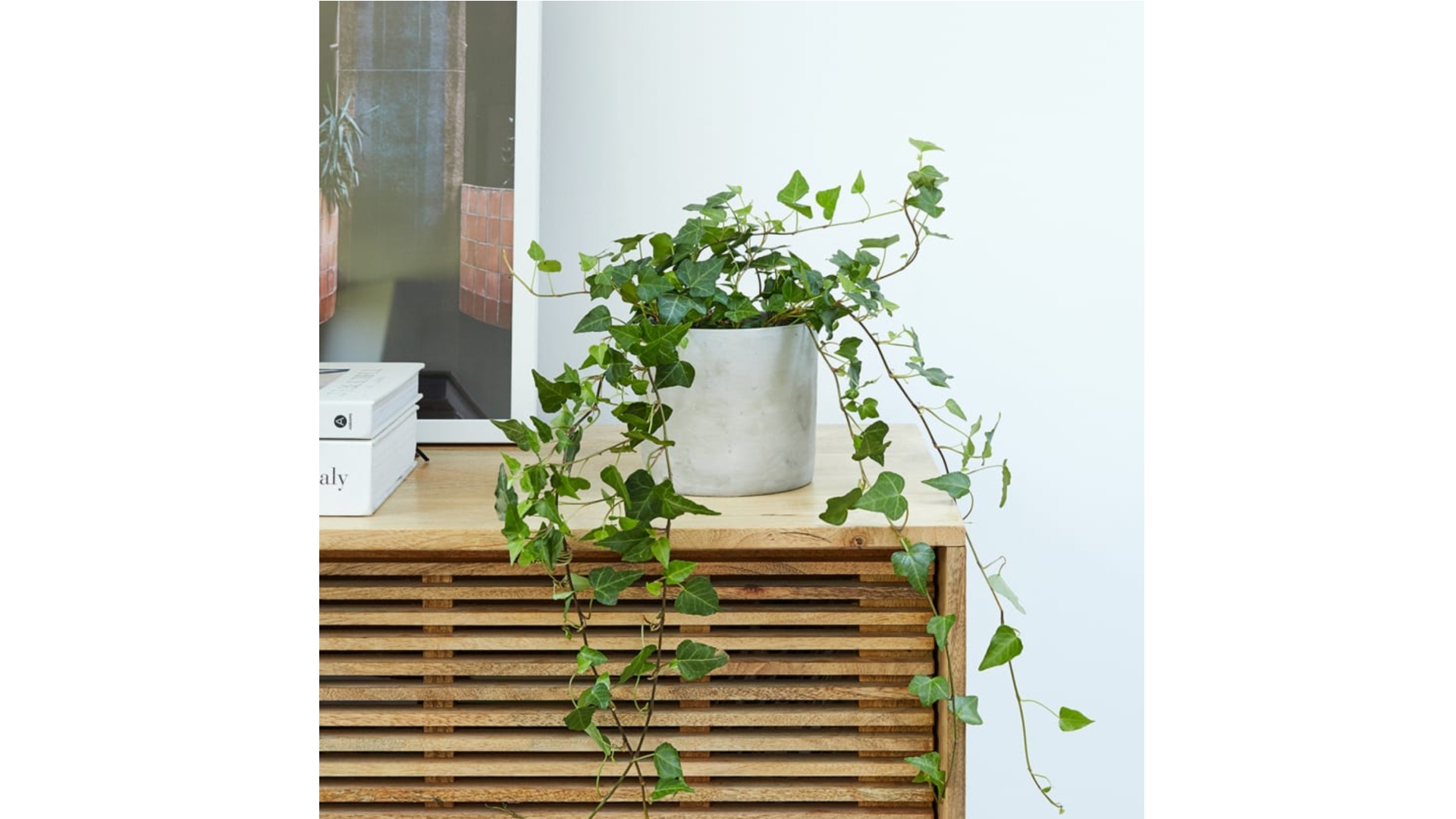
4. English Ivy | Hedera helix
Best indoor plants: the best hanging or trailing plant
Care level: Easy | Price: Affordable | Pet safe: No, toxic if ingested
Most people in the UK will be familiar with the English ivy as a native outdoor plant; its strong climbing and fast-growing habit mean it spreads easily across walls, buildings and fences in gardens and outdoor spaces - a boon for covering unsightly architecture and greening man-made buildings, sometimes not so welcome to those who have tried to prevent its vice-like grip from strangling trees and shrubs.
Its prolific outdoor performance is down to its hardy resilience, which also makes it an easy success story indoors. As a house plant, the English ivy is one of the best indoor plants for easily adapting to almost any light conditions, and it won’t put up too much fuss about slightly too dry or slightly too wet soil. Whilst its climbing habit makes it one of the best options for hanging planters, bookshelves or not-too-sunny window ledges where it trails beautifully.
How fast does English ivy grow indoors?
Although this quick-growing plant will thrive in almost any light condition, it will grow fastest in bright indirect light where its trailing stems can grow up to 9 feet annually once established!
Don’t worry if it starts to get out of hand though, the ivy can easily be trimmed to return it to a more manageable size, and, even better, cuttings are easily propagated; extending your plant collection or making great gifts for friends and family.
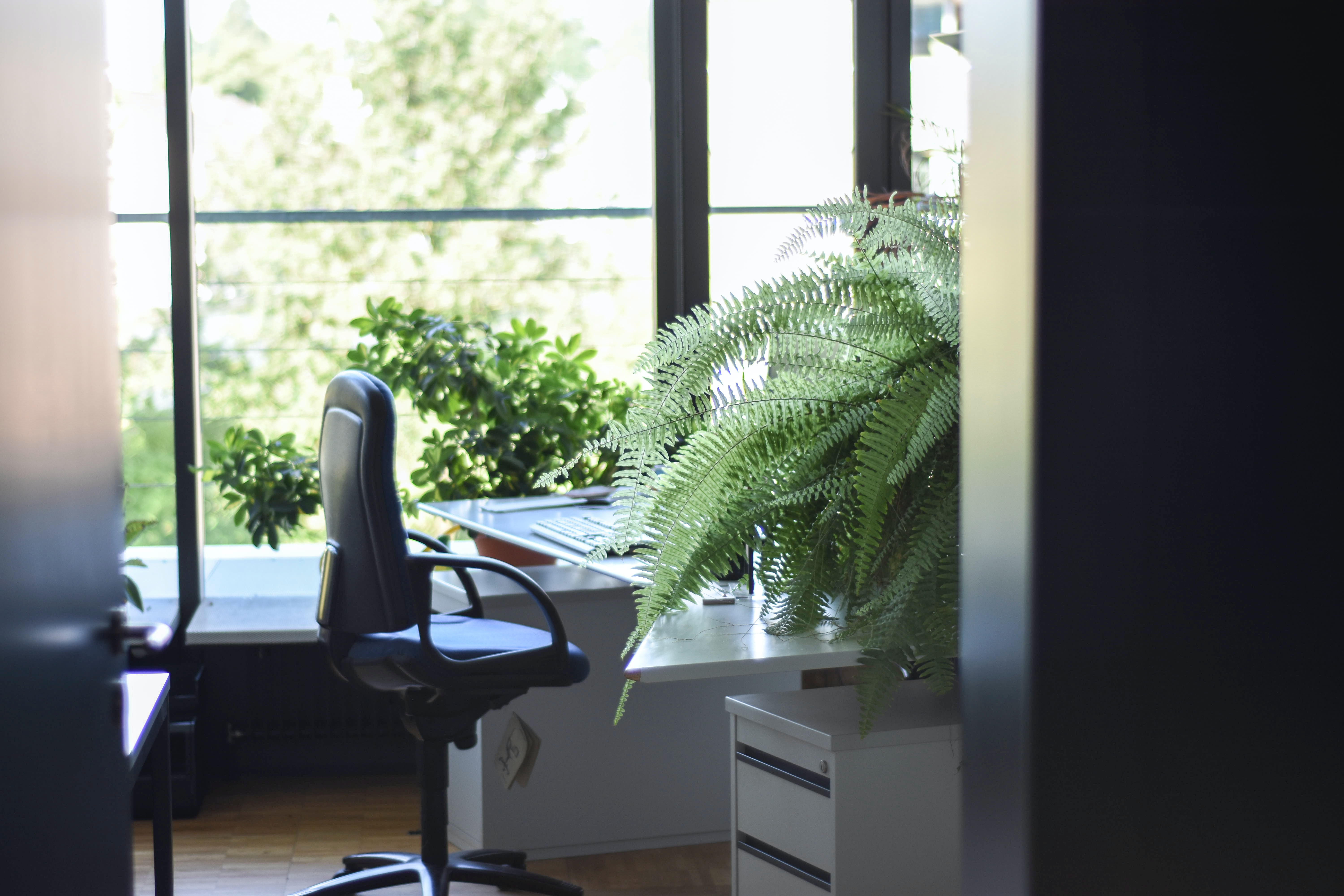
5. Boston Fern | Nephrolepis Exaltata
Best indoor plants: a shade-tolerant plant that’s great for bathrooms
Care level: Medium | Price: Affordable | Pet safe: Yes
When putting together a wish-list of the best indoor plants it’s good to choose options that thrive under a variety of conditions, as different rooms throughout the home – and zones within each room – can have very different light levels and temperatures depending on their aspect.
The Boston fern or Nephrolepis Exaltata has a liking for slightly lower light conditions and high moisture levels, making it one of the best plants for bathrooms. As Jo Lambell, founder of online plant boutique Beards and Daisies explains: 'Coming from a rainforest habitat, these plants like indirect light and humid conditions – so whilst you could mist it regularly, homing the Boston fern in the bathroom is a great way for them to get the frequent moisture they crave.'
How much sun does a Boston fern need?
As a native to tropical climates where it grows amidst the lush vegetation on the rainforest floor, the Boston fern is used to being in the diffused light of the rainforest canopy. As such full sun can scorch its fronds, but it isn’t a fan of deep shade either!
It’s worth the effort to find a spot that suits it however, as once content it will thank you with a wonderful mass of air-purifying foliage. In a bright room it’s a good bet to position it as far from the window as possible, whilst in a darker room it can sit closer to the natural light.
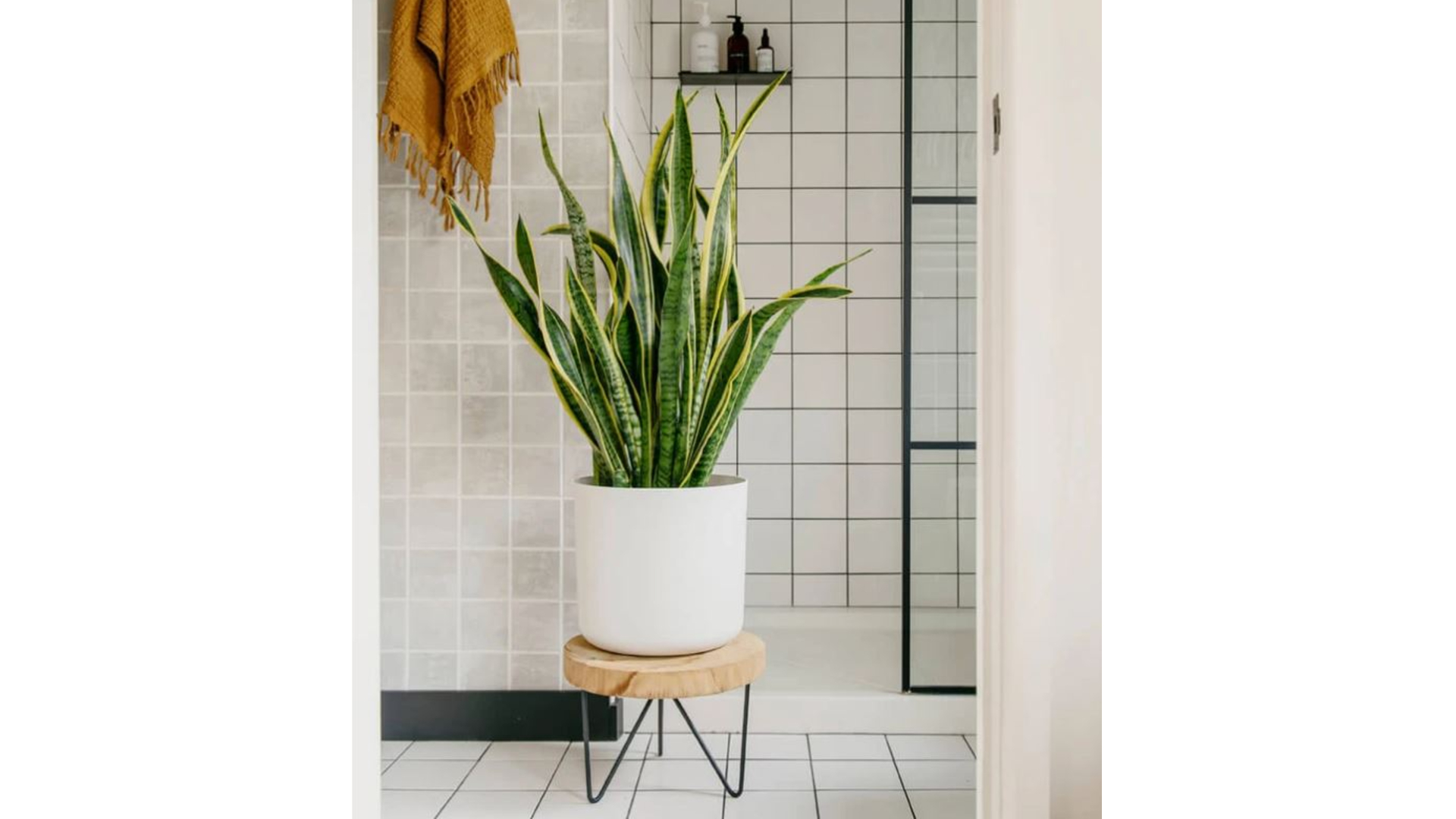
6. Variegated snake plant | Sansevieria trifasciata
Best indoor plants: a virtually indestructible plant
Care level: Easy | Price: Mid - Expensive | Pet safe: No, toxic if ingested, can also cause skin irritation
Also known as Mother in Law’s tongue, Saint George’s sword or viper’s bowstring hemp, the snake plant is one of the easiest indoor plants to care for. In fact it's often described as almost indestructible! It continues to release oxygen, even at night time, making it a good plant for bedrooms, where even if you forget to water it for a while, it won’t bear a grudge.
Jo Lambell of Beards and Daisies says: 'It’s easy to see why the snake plant is one of our best-sellers – not only do its long leaves make for a striking silhouette, but it really is made of tough stuff. Low light, infrequent watering and influxes of temperature are no match for the snake plant. It thrives in the face of neglect.'
Hardy, architectural, and a bold focal statement once it reaches its mature height, the only downside is those pointed leaves - its multitude of names are there for a reason: this plant has very sharp leaves! Fine when handled with gloves - which is recommended for repotting as it can cause skin irritation - but perhaps not one to have around small children.
How often should I water Sanseveria?
The snake plant is a succulent so can tolerate droughts well - making it quick to recover if you’ve neglected to water for a while. Succulents generally prefer to be underwatered rather than overwatered so err on the side of caution and follow the rule of less is more - a drink every few weeks in spring and summer and less during the cooler months should be fine.
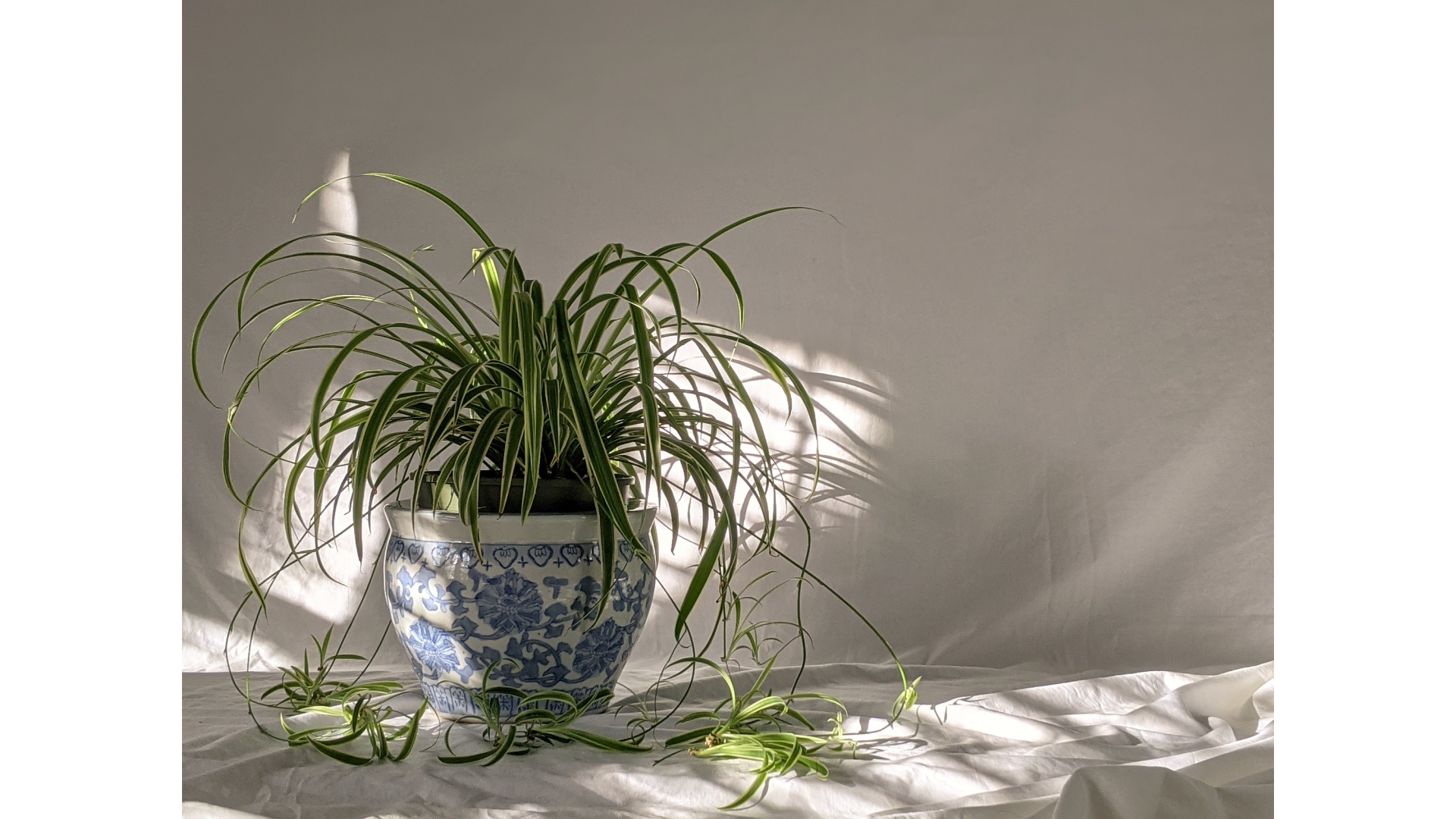
7. Spider Plant | Chlorophytum comosum
Best indoor plants: a quick-growing and easy-to-propagate plant
Care level: Easy | Price: Affordable | Pet safe: No, mildly toxic if eaten
This is possibly the house plant we’re all the most familiar with. Its ubiquity as the hanging-macrame-basket plant of the 1970s meant it faded out of fashion for a while, but as we all know, retro plants are back!
This is good news as the spider plant is incredibly easy to care for, happy in low light conditions, and one of the best indoor plants for easy propagation. It also removes several toxins from the air whilst continuing to release oxygen all through the night.
It works well sat on top of furniture or hanging from the ceiling, with its arching leaves and trailing stems of ‘baby’ spider plants adding graceful greenery to the corner of a room.
How much sun does a spider plant need?
Spider plants grow fastest in bright indirect light but can tolerate low light conditions and shady spots too, making them suitable for almost any room as long as they’re kept away from the scorching effects of direct sunlight.
Should I cut the babies off my spider plant?
Spider plants are renowned for sending out lots of shoots from which multiple babies or spiderlets rapidly grow. You can leave these until they are fairly large in size if you like the look of them trailing from a hanging plant or from the top shelf of a bookcase, but new growth will deplete the mother plant’s resources, so cutting them off to keep the original plant in optimum health is a good idea.
Spider plant propagation is easy - the baby plants generally root easily in water or soil and will soon create a lush new plant – perfect for gifting to friends, family, neighbours, strangers… you’ll soon have plenty to go around!
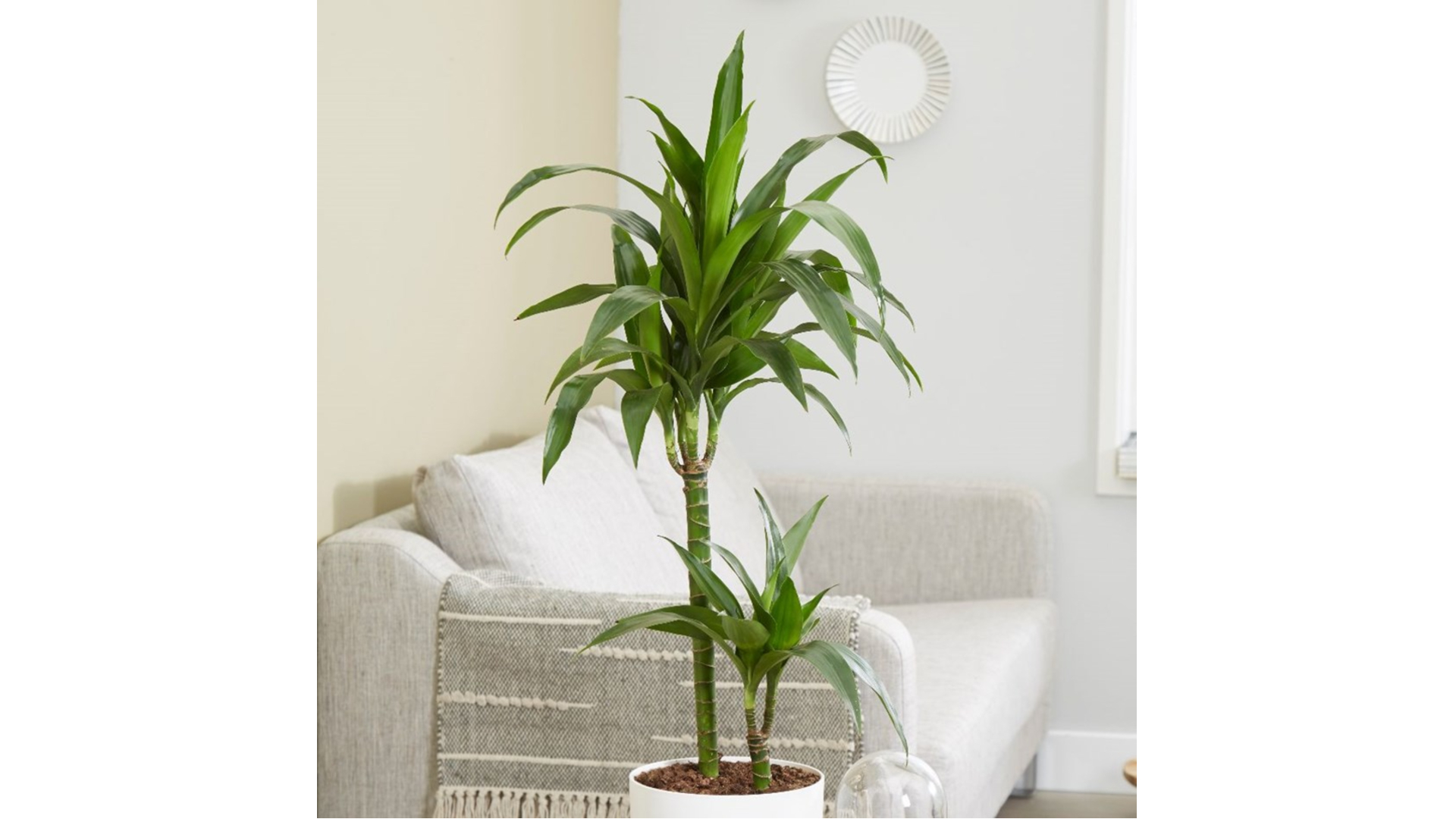
8. Corn plant | Dracaena fragrans
Best indoor plants: a low maintenance plant
Care level: Easy | Price: Mid-range when small, expensive when larger | Pet safe?: No, mildly toxic if eaten
The distinctive Dracaena fragrans or corn plant looks a bit like a small palm tree, with a thick husky stem and profusion of sword-like foliage at its crown. Also known as the dragon plant for its sometimes fire red-tinged leaves, this plant grows naturally in African soils so is used to hot climates and little water - hence being one of the best indoor plants as it will forgive some neglect.
Although they grow to great heights in their native environment, indoors the Dracaena will grow slowly.
Is it easy to look after for a Dracaena fragrans?
Compared to most plants the Dracaena needs very little water and is generally low maintenance. It will benefit from a regular dusting of its leaves to unblock pores and in a dry environment, it’ll happily receive a light misting to give its leaves a renewed shine.
Why are the leaves on my Dracaena turning brown?
Although the corn plant doesn’t need much water, in a centrally-heated home its leaves can suffer from the dry environment. Whilst it doesn’t enjoy its soil being too soggy, it will like misting with water or being placed on a saucer filled with pebbles and water which will create a humid environment as the water evaporates.

9. Weeping Fig | Ficus Benjamina
Best indoor plants: an elegant plant that’s great for bedrooms
Care level: Medium - Difficult | Price: Mid-Range - Expensive | Pet safe?: No, mildly toxic if eaten
Delicate arching branches and a plethora of shapely glossy leaves make this one of the most elegant indoor plants. However, as is often the case with such beauty, the weeping fig does require a little more maintenance than most of our other houseplant options.
Its numerous leaves require plenty of moisture – both through regular watering and regular misting to keep humidity levels up. It prefers bright indirect light (although the solid dark green-leaved varieties can tolerate more shade than their variegated counterparts), and is particularly sensitive to changes in light levels or temperature, so will shed some leaves throughout the year (and generally on its arrival in a new home whilst it settles in). Although it will soon grow plenty more leaves to replace any lost, this isn’t always ideal with pets around, as discarded leaves are mildly toxic if ingested.
How big does an indoor weeping fig tree get?
Outdoors weeping fig trees can grow to nearly 100ft, but there is no danger of that indoors where growing conditions mean at maximum it might eventually get to 6-8ft - still pretty impressive though! If you don’t want it to get this big then prune the fig tree in winter to keep it to a more manageable and healthy size.
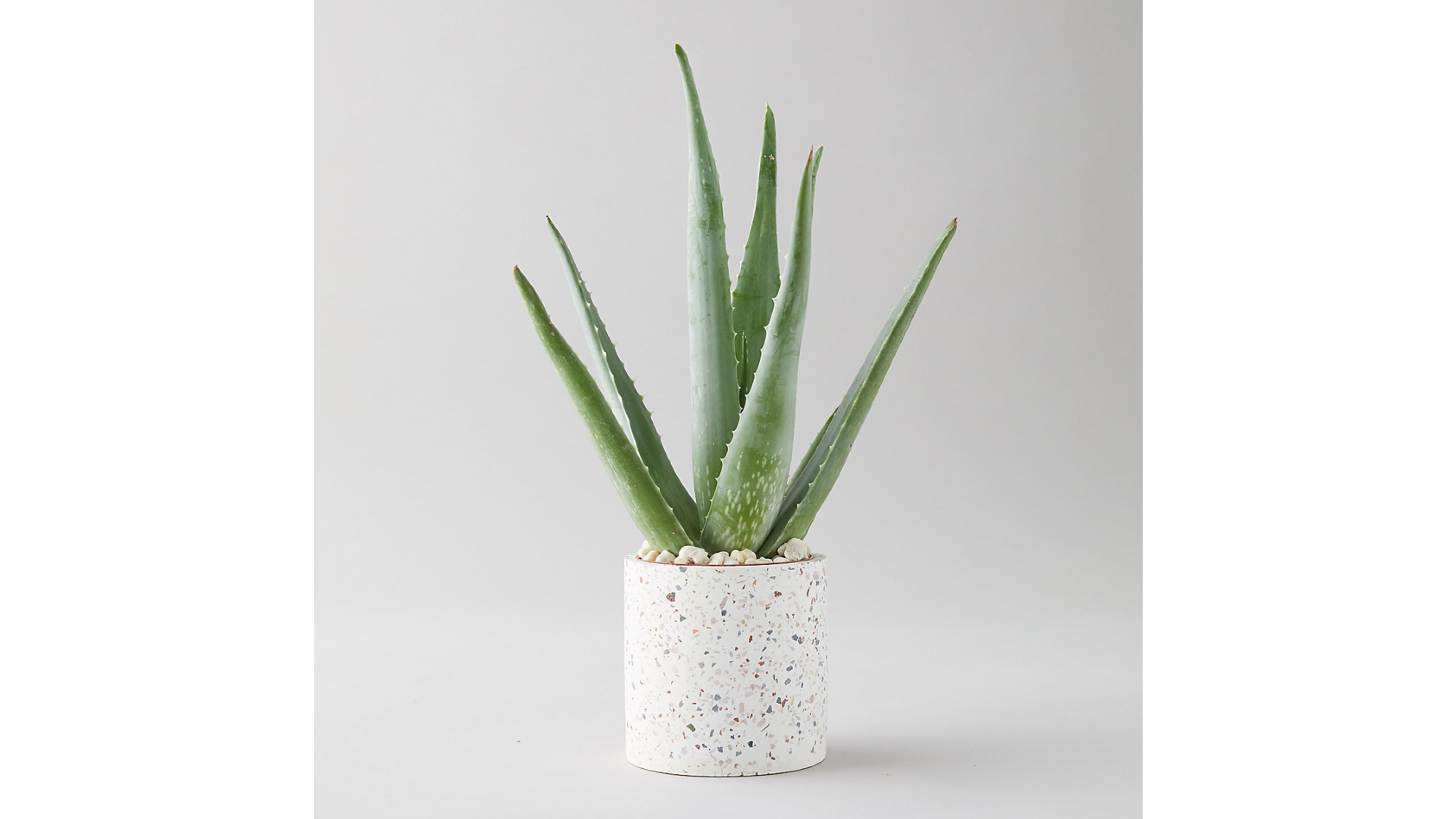
10. Aloe Vera | Aloe barbadensis miller
Best indoor plants: the plant that’s also a first aid kit
Care: Easy | Price: Affordable - Mid-Range | Pet safe: No, toxic if ingested
The aloe vera plant has been prized for thousands of years for its medicinal properties. Thanks to the soothing gel inside its fleshy leaves, this plant is often recommended for the kitchen as the sap provides a handy ‘natural first aid kit’ that can be applied to minor burns or sunburn.
Aloe vera love bright sunshine and is even happy soaking up some direct light on the windowsill, making it a great addition to any home.
Looking after an aloe vera plant
The aloe vera plant likes plenty of light, needing six to eight hours of bright indirect sunlight a day, and even being tolerant of the bright direct light of a sunny windowsill.
Seemingly at odds with its gel-filled leaves, it doesn’t require much water, preferring to dry out nearly completely between watering. However those fleshy leaves are sensitive to the cold, so make sure to home it in a warm spot and away from drafts - ideally not in the windowsill behind heavy curtains where a cold pocket can form even on spring and autumn evenings.
Top tips for buying the best indoor plants online:
Convenience
Generally buying plants online is going to be a little more expensive than buying from your local garden centre. This reflects the difficulty of shipping delicate living plants in the post and the increased costs in packaging and handling. However in terms of convenience - especially if you don’t have a car big enough or are lugging plants home via a long walk or public transport - we love the ease of online plant shopping.
Getting it right
Sourcing indoor plants online gives you more opportunity for a little research into your new plant’s likes and dislikes - most reputable online plant retailers give in-depth information and ‘how to care for’ guides on their websites - a lot more than you will get on the tiny label in most garden centres! This means more likelihood of buying a plant that will thrive in the conditions you have to offer it and less chance of an expensive mistake.
Check plant sizes
When plant shopping online make sure to check the height of your new purchase - it’s easy to think one peace lily is equal to the next and go for the cheapest online price, but often different retailers will sell different sized specimens and your bargain plant may turn out to be much tinier than you expect.
You will save money by going for a smaller, younger plant that will continue to grow as you care for it, but if you want the immediate impact of a mature plant - that could have taken several years to get to its mature size - then you will pay more for it.
Creating a stylish indoor plant display
We recommend going for a mixture of younger and more mature plants if you’re amassing an indoor plant collection as they will add variety to your indoor plant ideas - and as one plant grows and needs potting on into a larger plant pot you will always have another plant ready to move up and fill its boots!
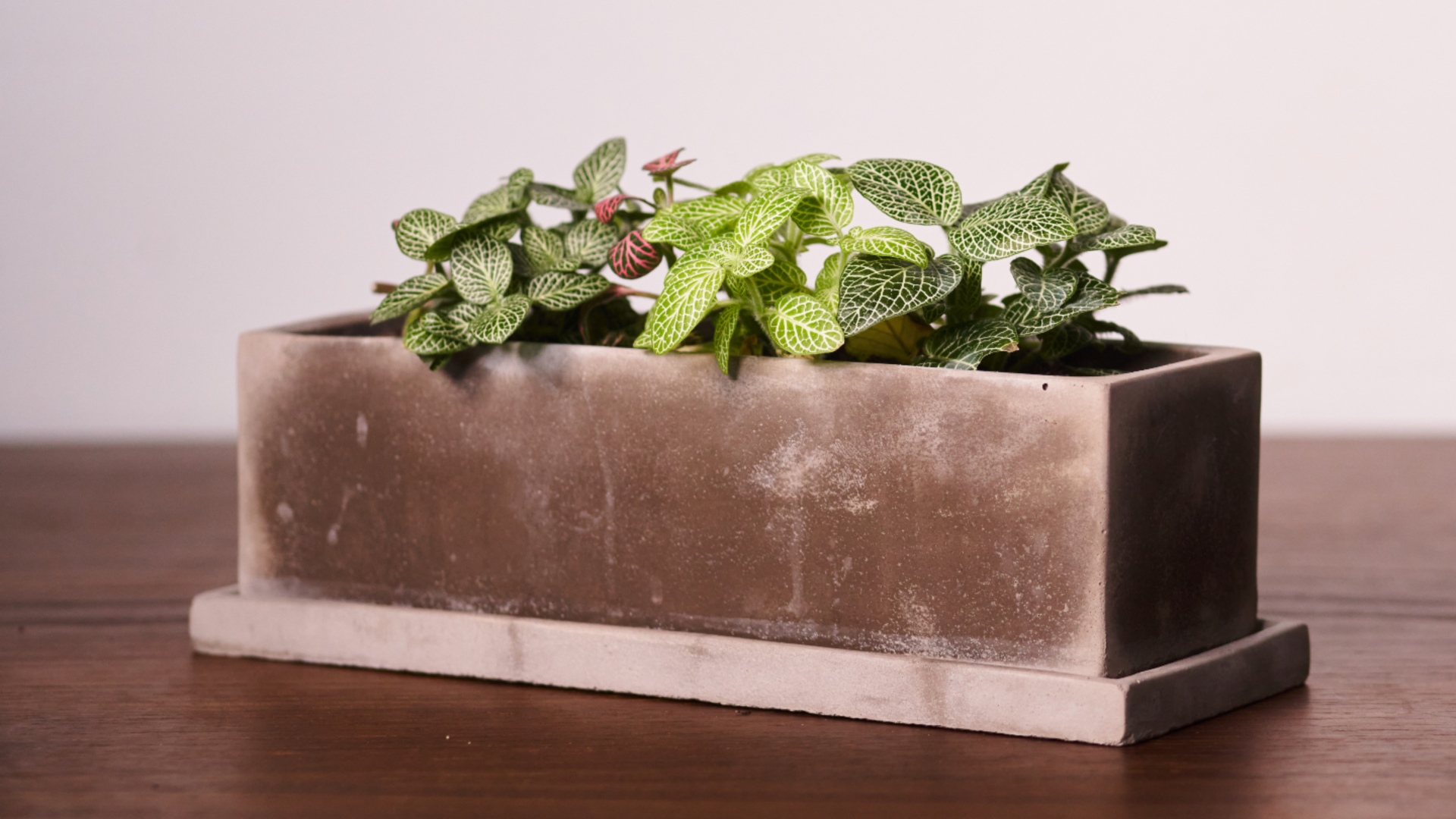
Repotting your indoor plants
Once you've amassed the best indoor plants for your space, you'll want to take good care of them. We asked Timothy Sherratt, founder of plant pot emporium Anther + Moss for his expert advice on indoor plant repotting:
'Repotting can be as complex as you want to make it. I always recommend just getting stuck in rather than worrying about perfection, but there are a few simple things you can do to give your plants the best chance at healthy growth.'
- Don’t repot unless you need to. Being repotted is a lot of upheaval for a plant. Even if you’re gentle there’ll be root damage that your houseplant needs to recover from. Limit it to once a year at the most.
- Repot during the growing season. Houseplants are mostly dormant during the winter months (approx October - Feb), which makes recovering from that root damage much harder and slower. Spring is the ideal time.
- Use a pot with a hole in the bottom. The easiest way to kill a houseplant is overwatering. This is made much more likely if your pot doesn’t have a hole in the bottom. Too much water in the soil stops the roots getting the air they need, and ultimately leads to root rot. Using a porous pot can also help with moisture control, this is particularly important for plants that like their soil to dry out between waterings.
- Only go up a pot size or two. This is also about moisture control - if a small plant is in a big pot it’ll never drink all the water available. The soil can stay too soggy for too long and root rot becomes a risk.
- After you’ve repotted choose a shady spot for a week. Repotting causes root damage, which inhibits the plant’s ability to absorb water. The shady spot will help limit the amount of water evaporating from the leaves while the roots recover.
- Bonus tip: Use a species specific compost. While general purpose potting compost will be fine in most cases, for really happy plants go the extra mile and use compost made specifically for that species. All plants have evolved to expect a certain environment, the closer we can replicate the expected conditions the happier they’ll be.
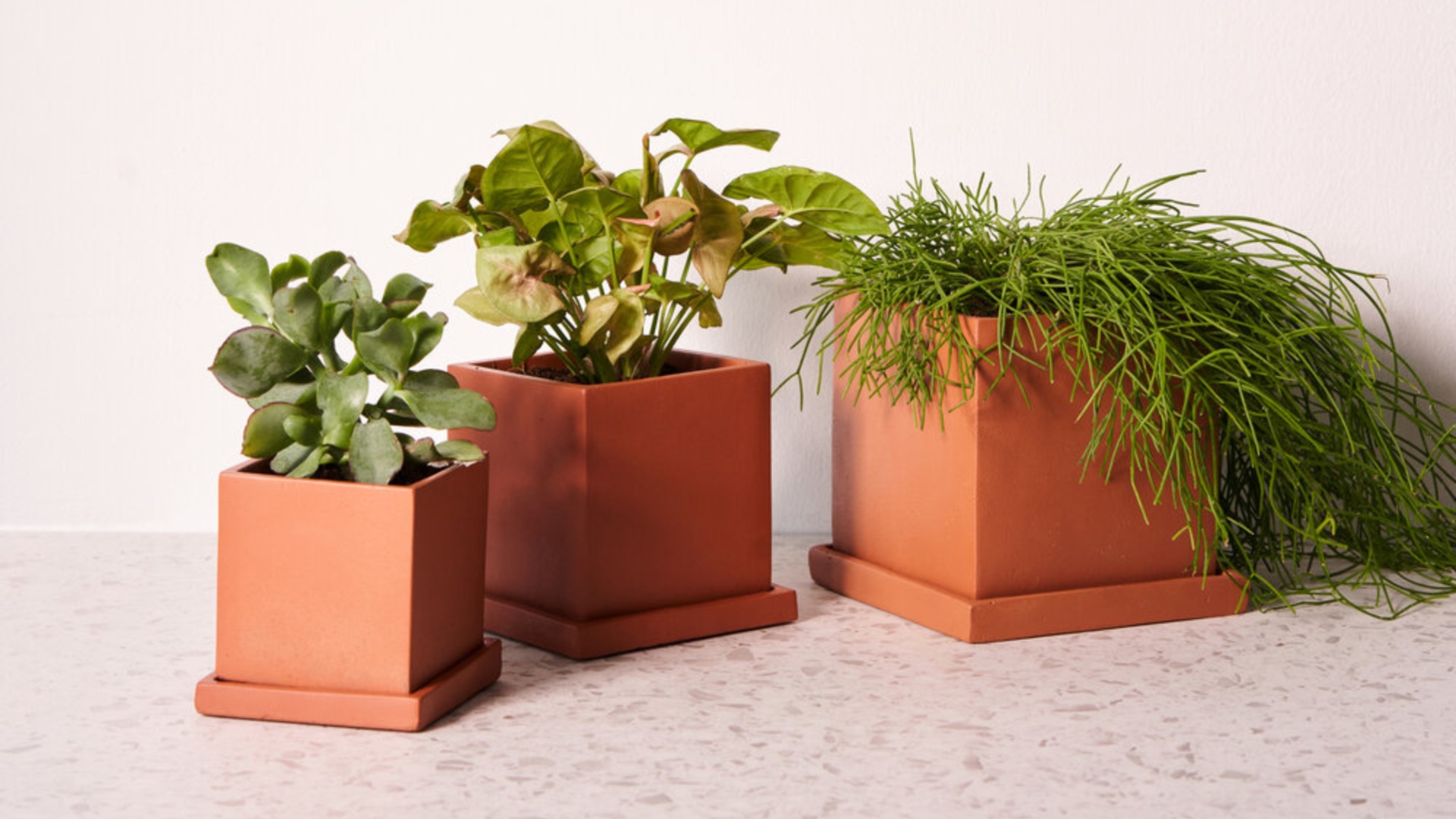

After specialising in Textile Design for Interiors at Winchester School of Art, Amy spent many years working in the design and interior industries, including styling and visual merchandising for many well-known brands. She now writes for multiple interior publications, including Livingetc, Homes & Gardens, Ideal Home, and Real Homes to offer advice on creating a well-designed interior, whether that's choosing the perfect shade of paint, what to look for when investing in a new sofa, or sourcing on-trend and sustainable products for the home.
Amy joined the Gardeningetc team to bring her design knowledge outdoors, offering advice on what to consider when shopping for the best garden furniture, how to choose the ideal garden bench, and sourcing everything you need to create an outdoor living area that will become the perfect place to kick back and relax when the sun shines.
